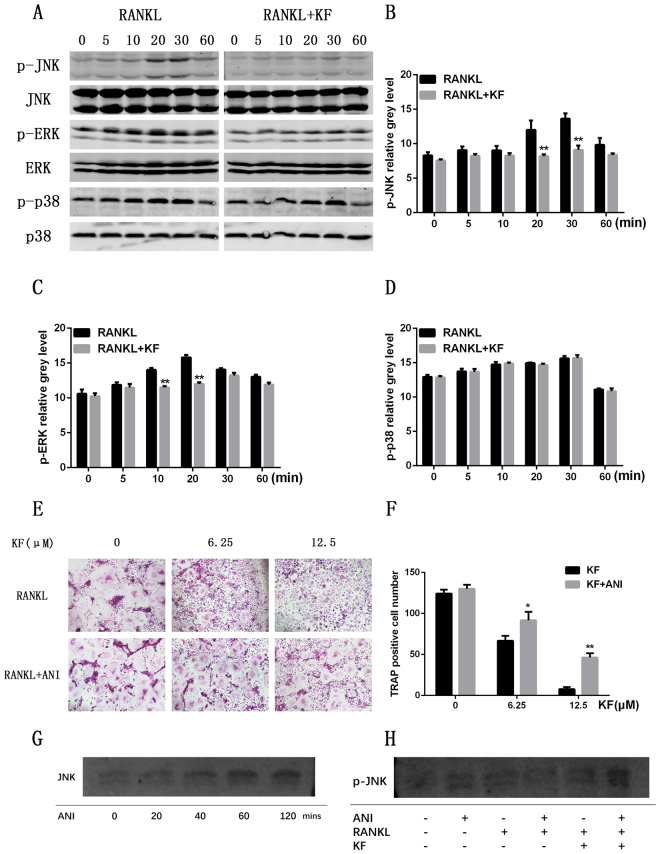Figure 3.
RAW264.7 cells were pretreated with vehicle or KF for 4 h followed by RANKL stimulation (50 ng/ml) for the indicated times. Then cells were lysed in lysis buffer, and lysates were analyzed by Western blotting with the indicated antibodies. (A) KF treatment suppressed the phosphorylation of JNK and ERK signaling pathways, while the phosphorylation of p38 was not inhibited. (B) Statistical analysis of p-JNK grey level showed significant difference between the KF treatment group and the control group at 20 and 30 minutes. (C) KF also attenuated the ERK phosphorylation at 10 and 20 minutes. (D) KF treatment does not affect p38 signaling pathway. (E) The inhibitory effect of KF on osteoclastogenesis was rescued by anisomycin. When treated with RANKL and KF, osteoclast formation was significantly inhibited, this inhibitory effect was rescued by anisomycin. (F) In each KF group with same concentration, the number of osteoclast increased significantly after treatment of anisomycin. (G) The JNK expression increased gradually from 0 to 120 mins. (H) When treated with RANKL+KF+Anisomycin, the p-JNK expression was observed compared to the RANKL+KF group.

